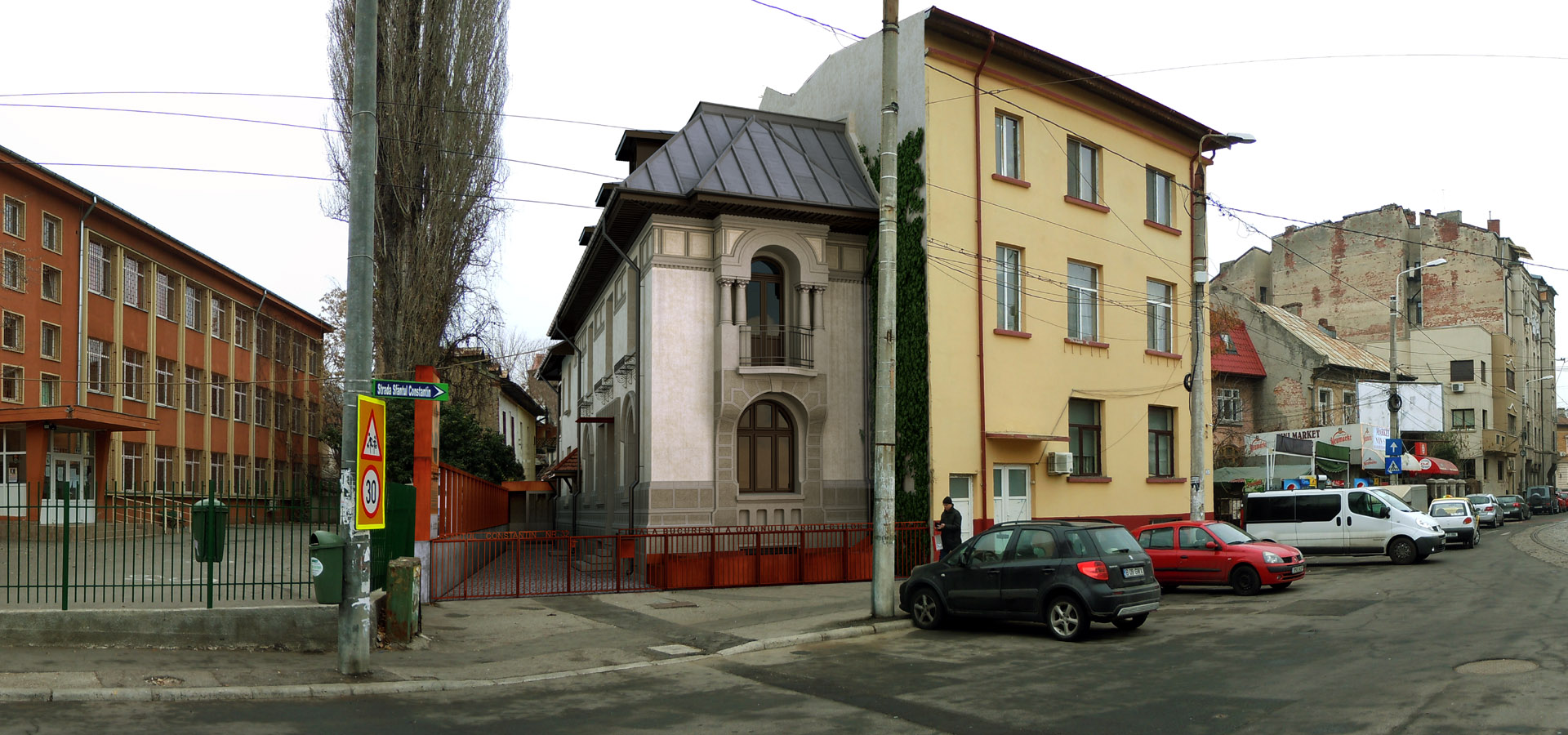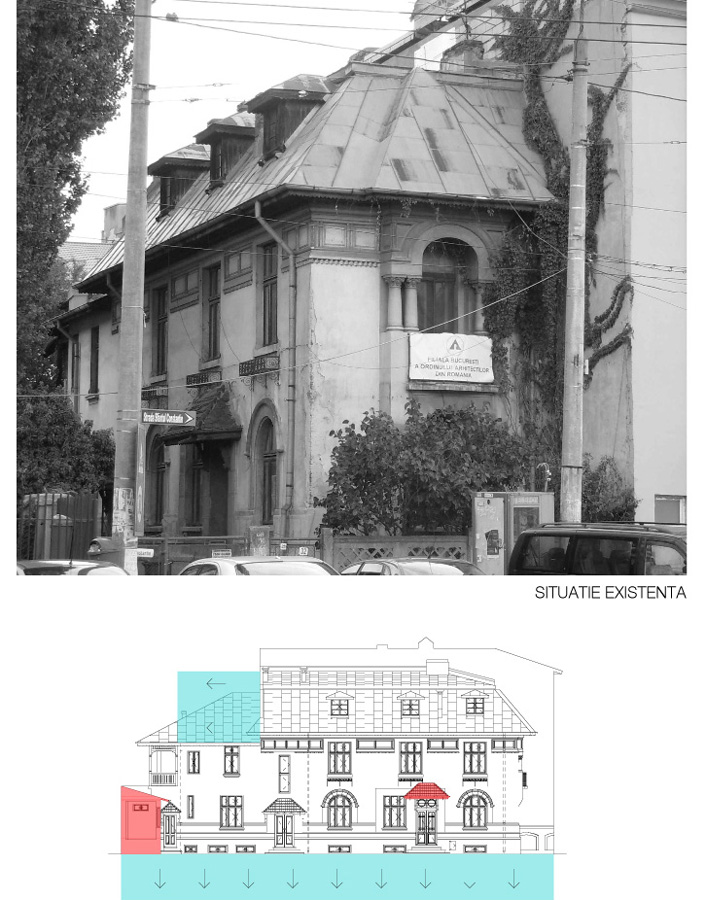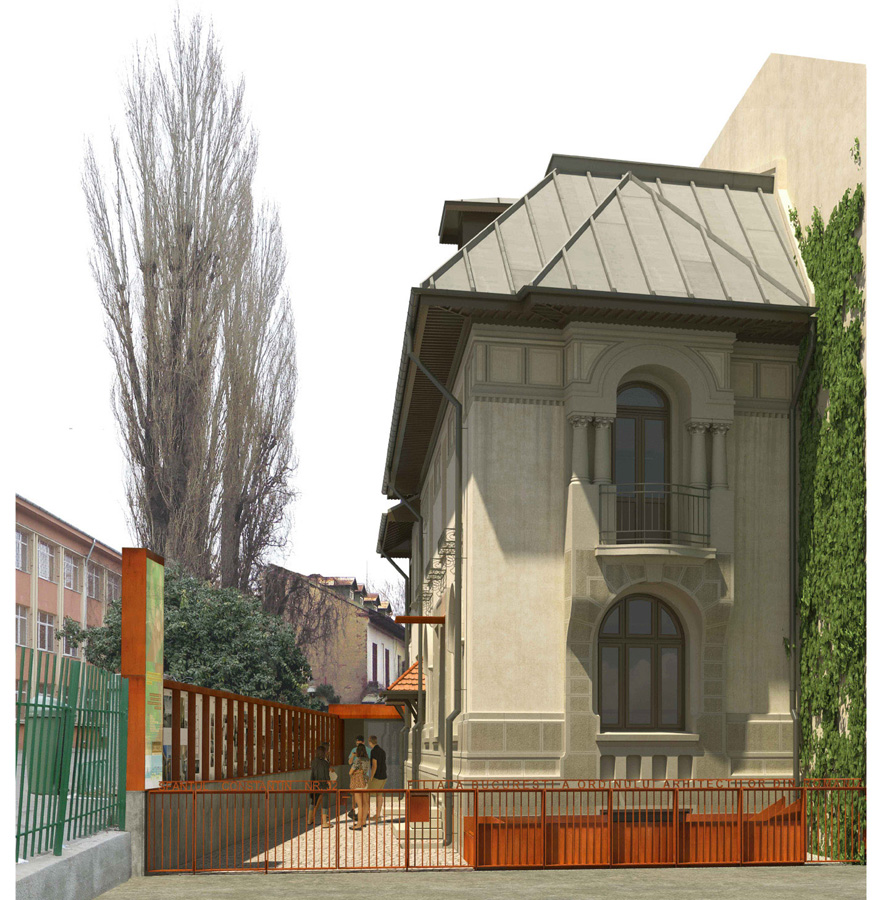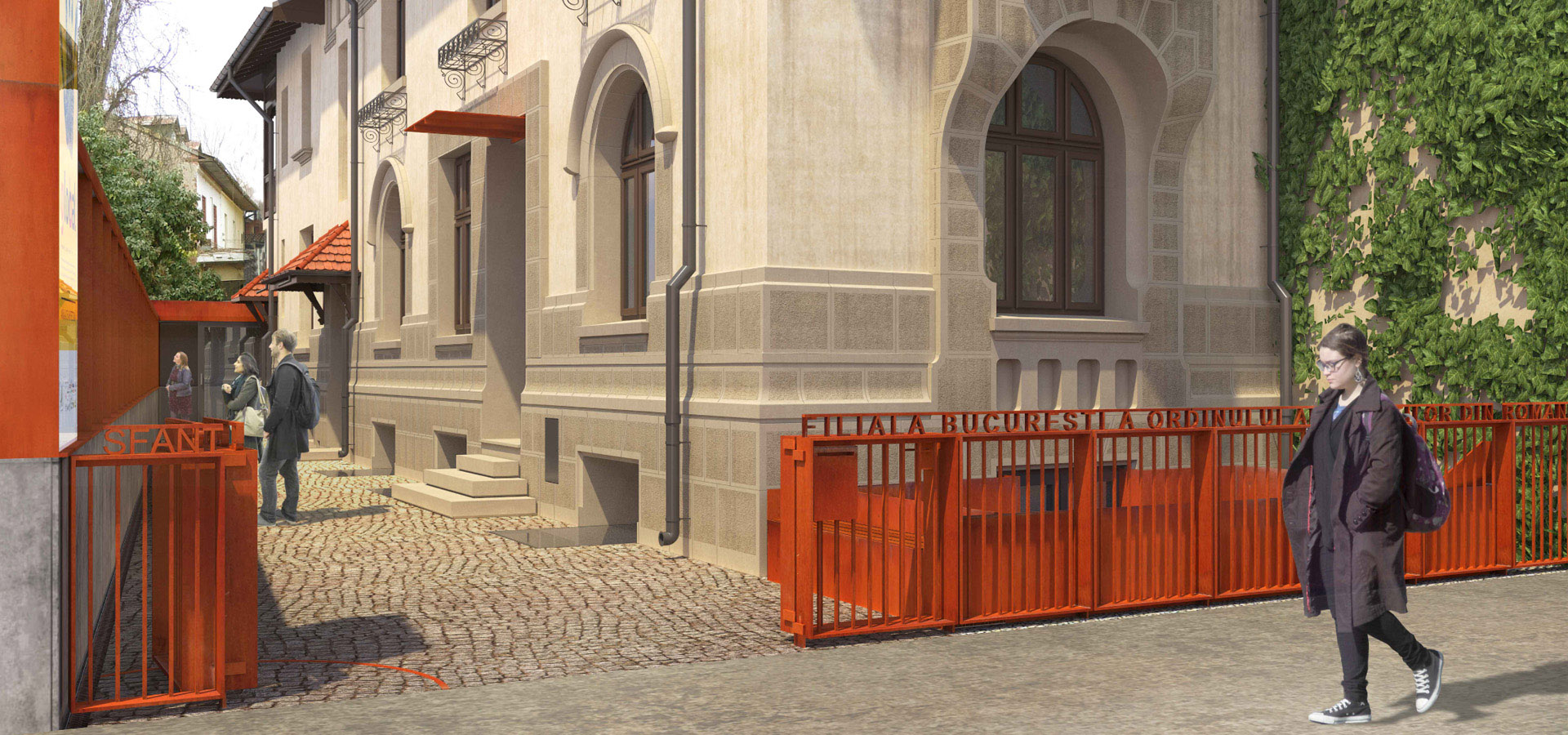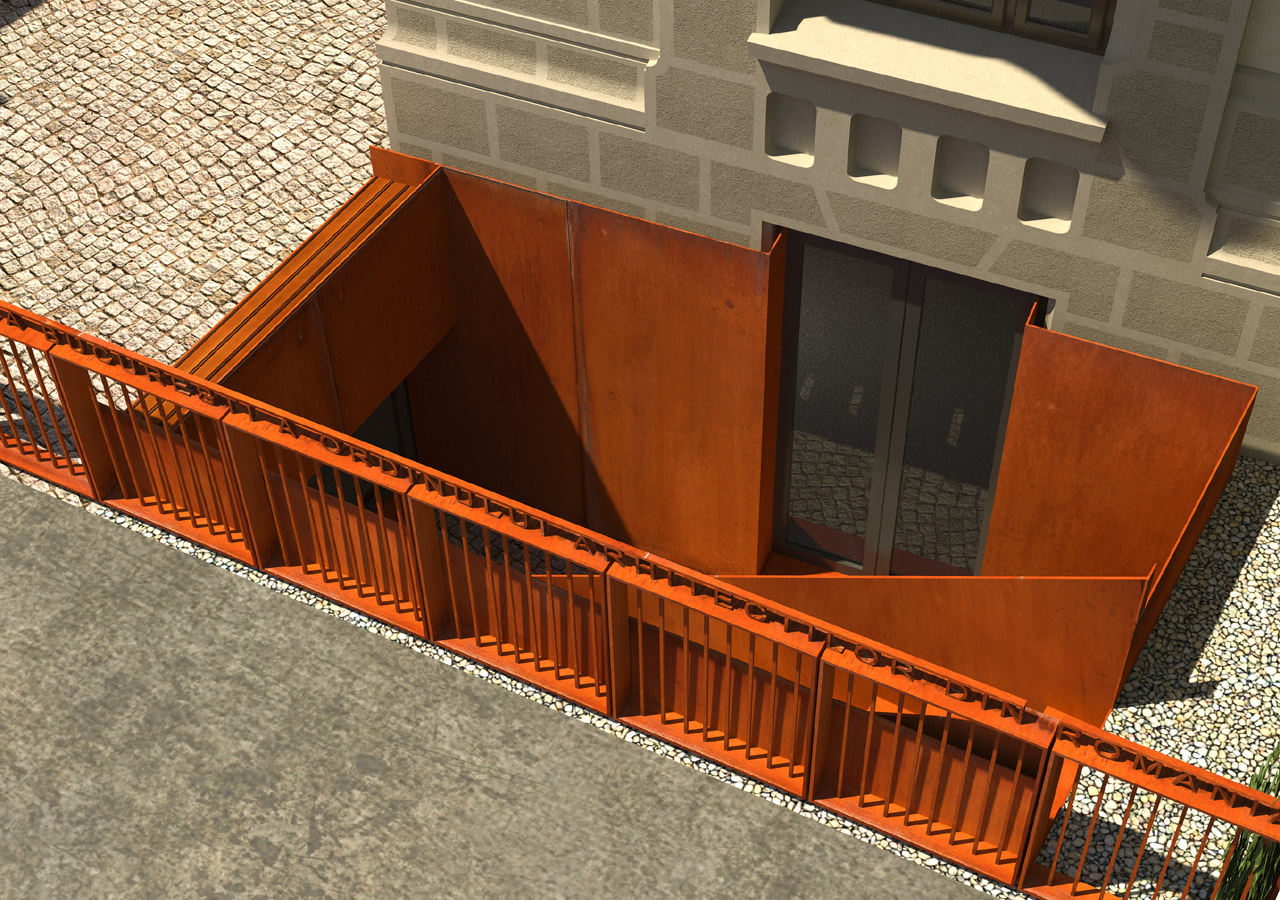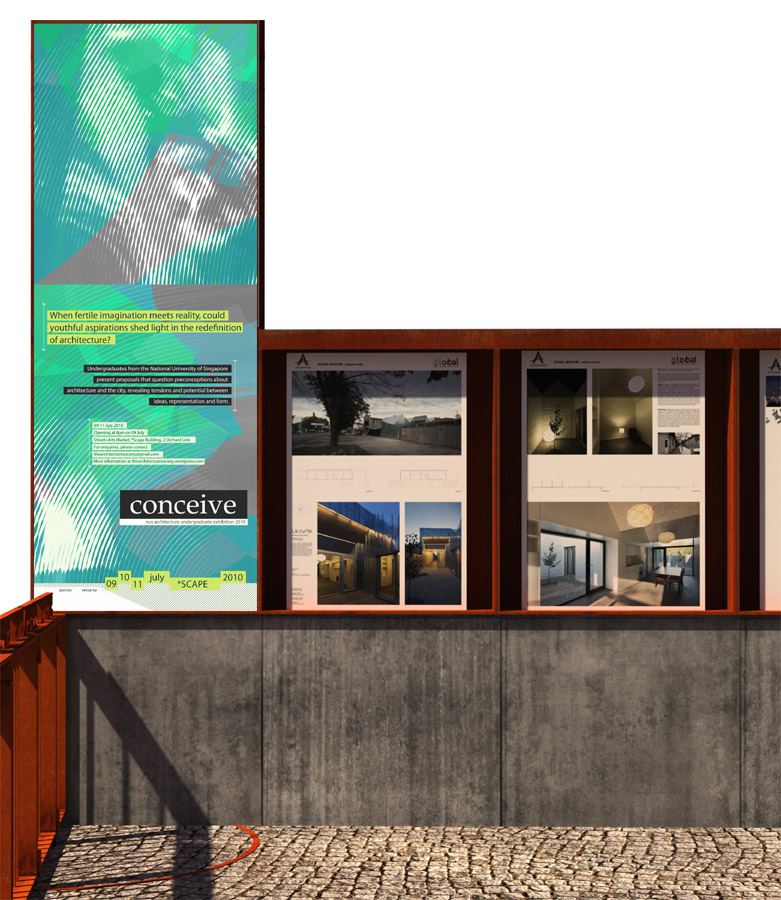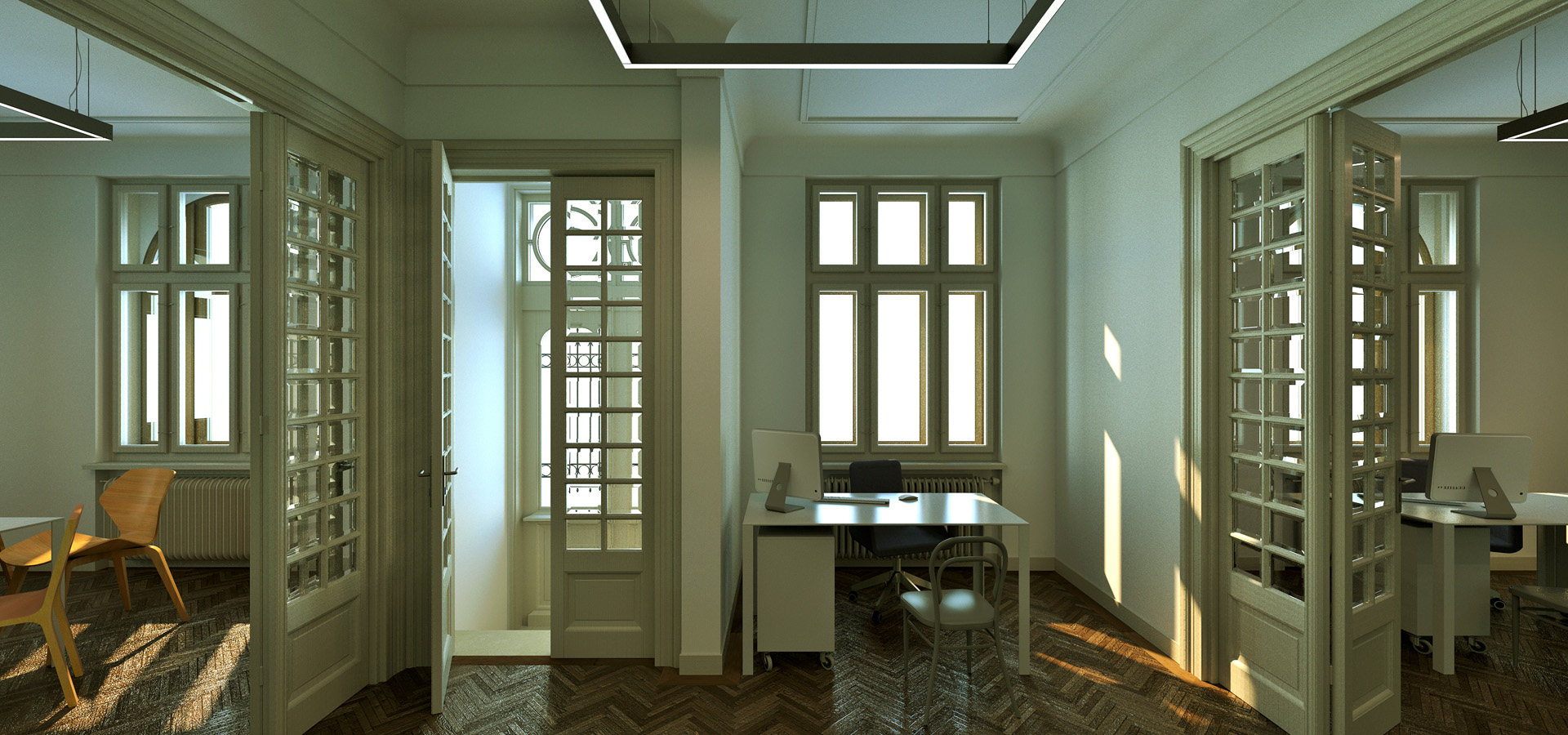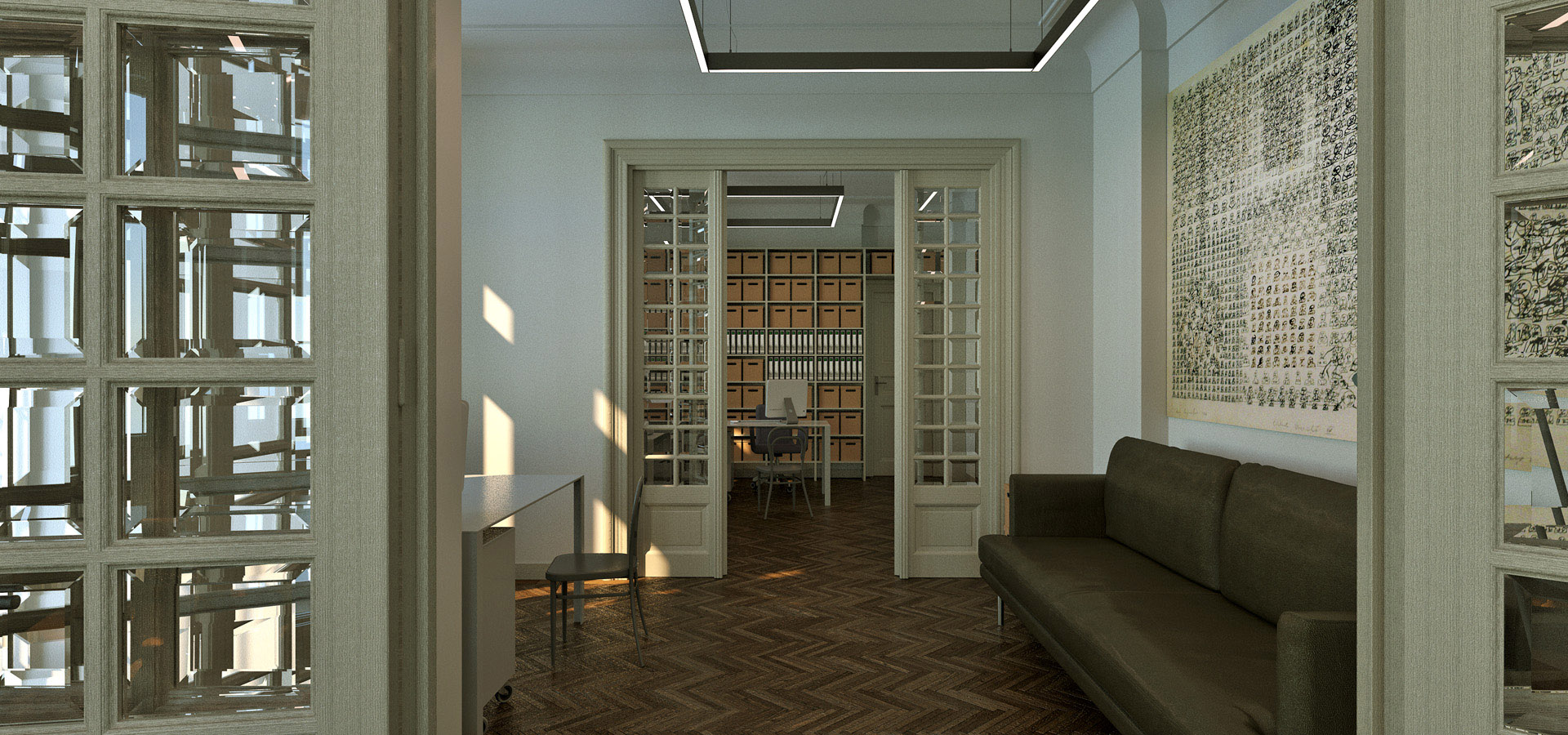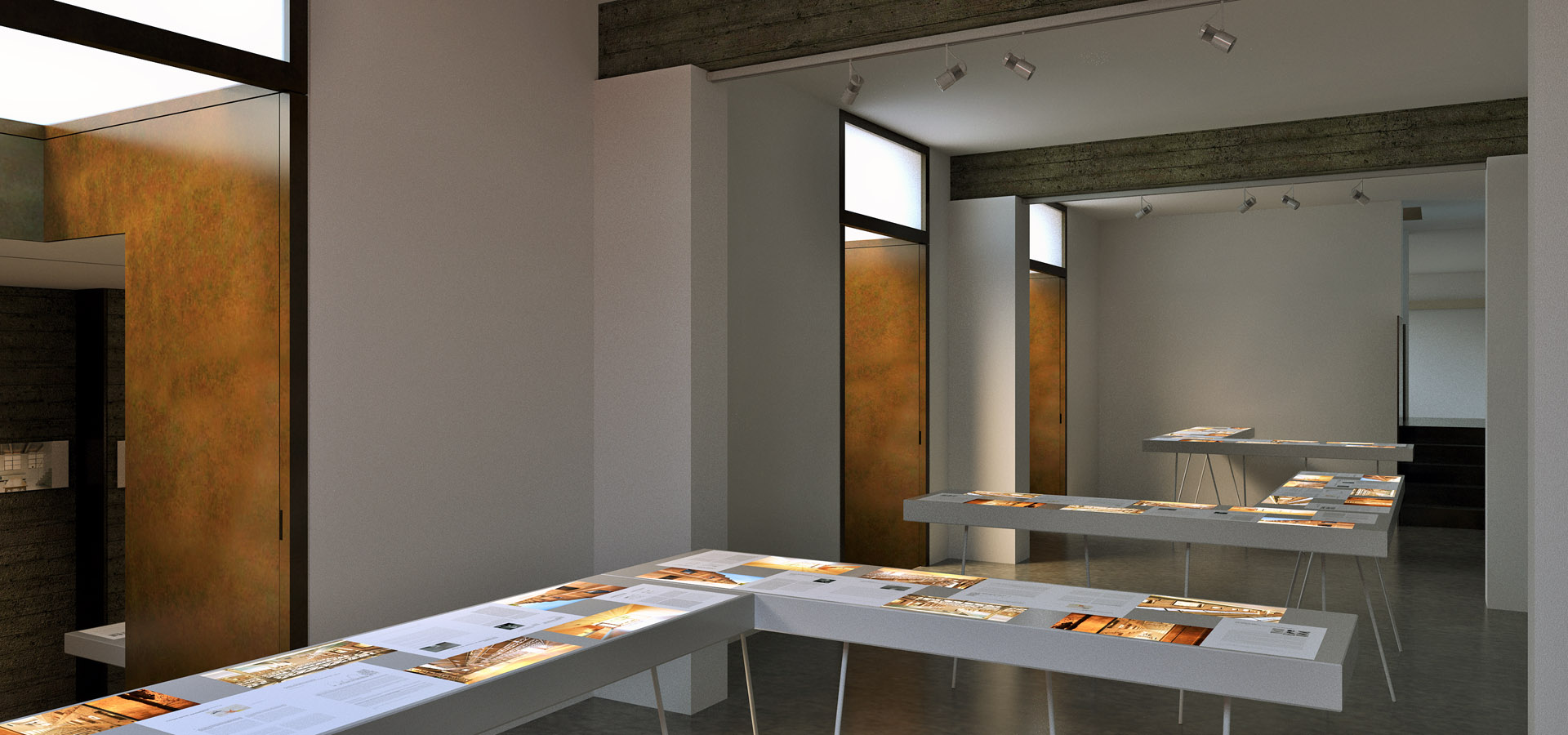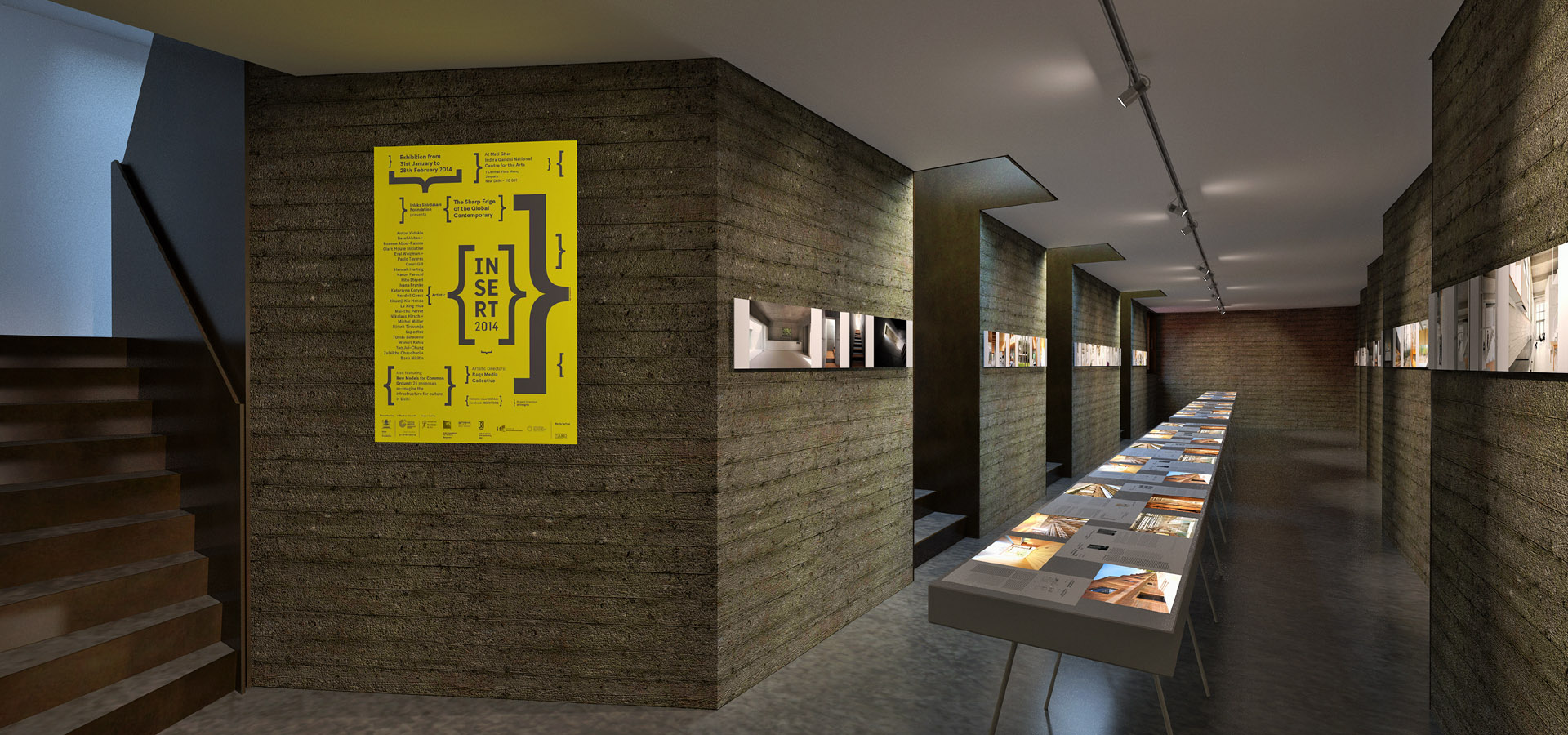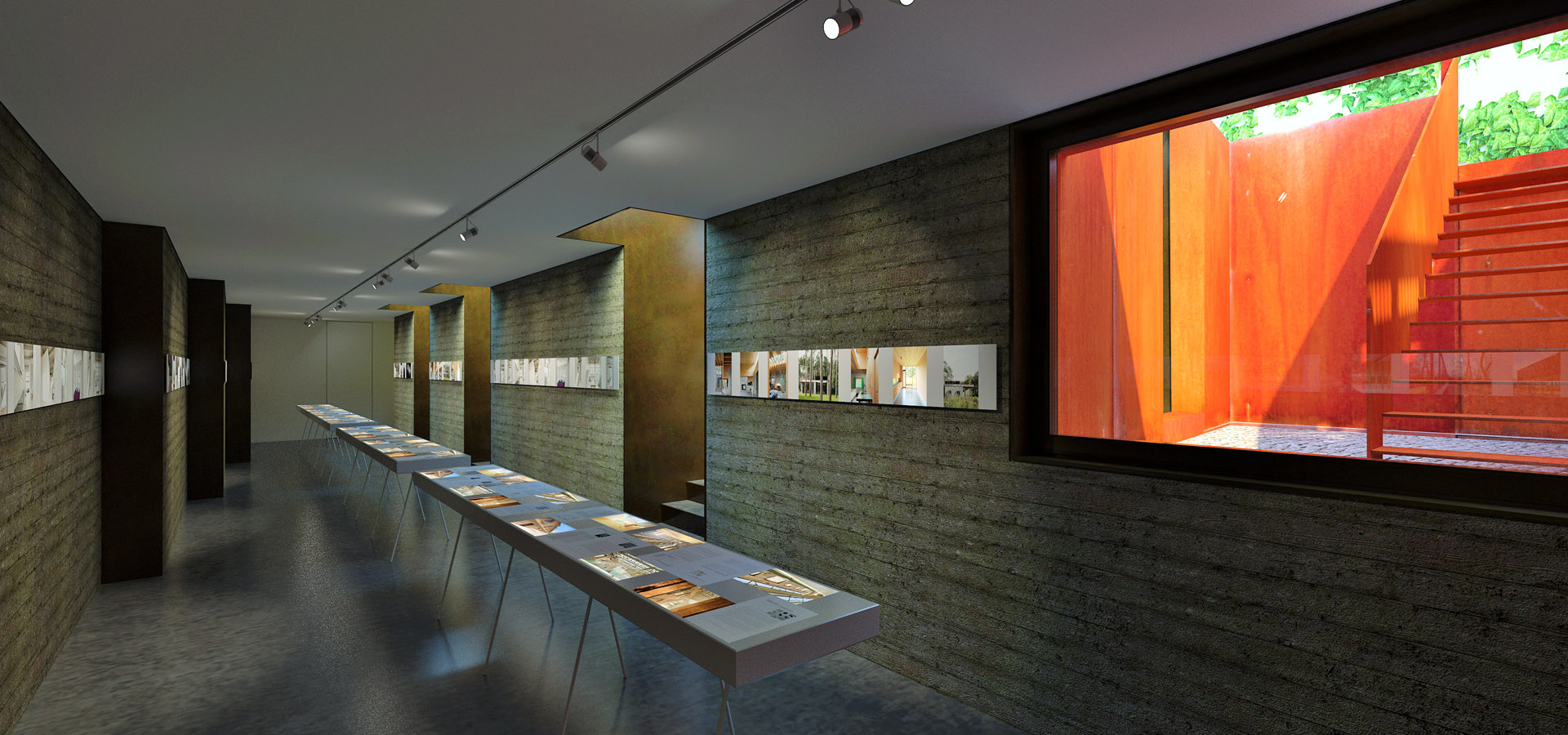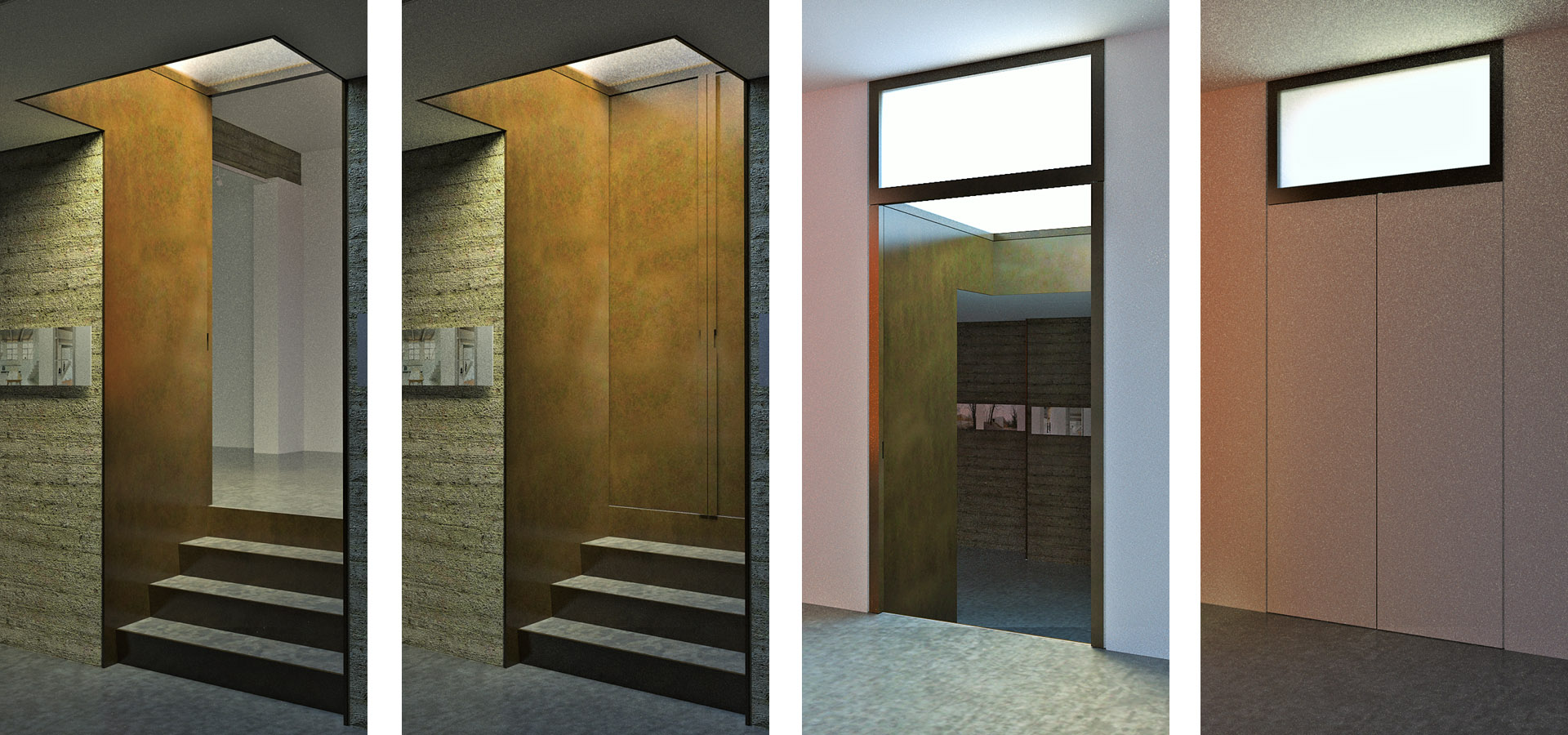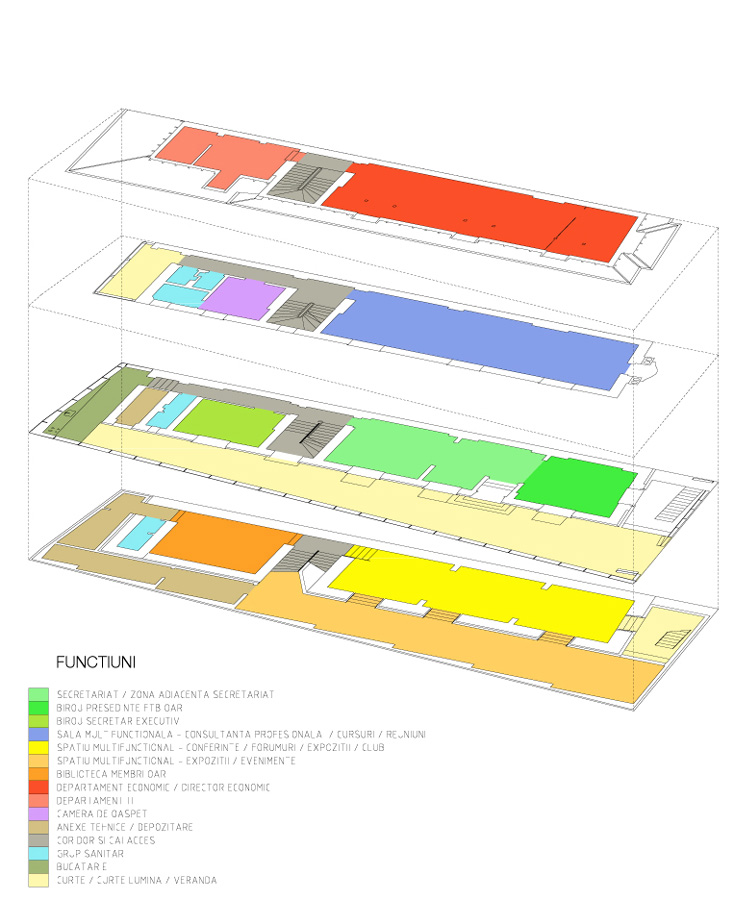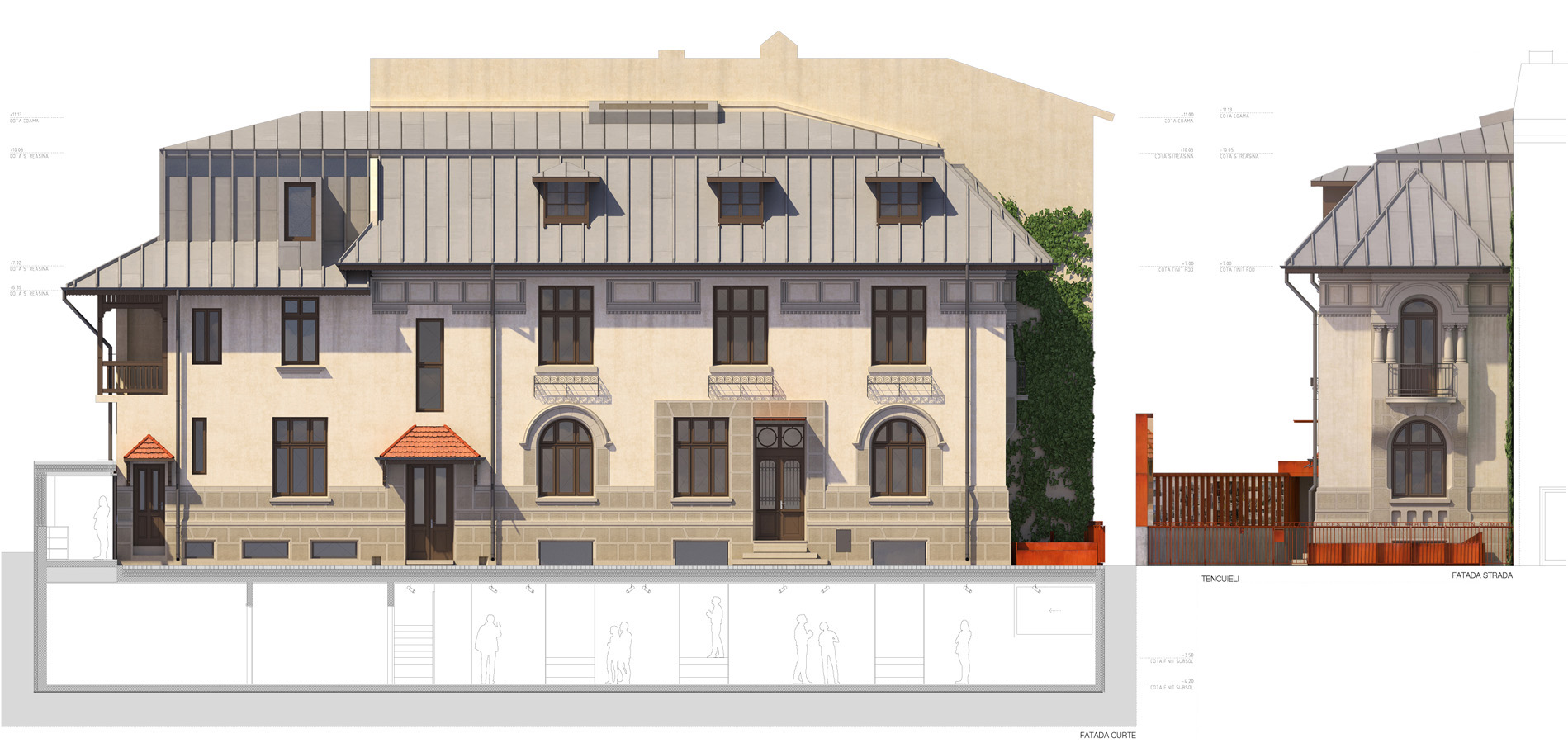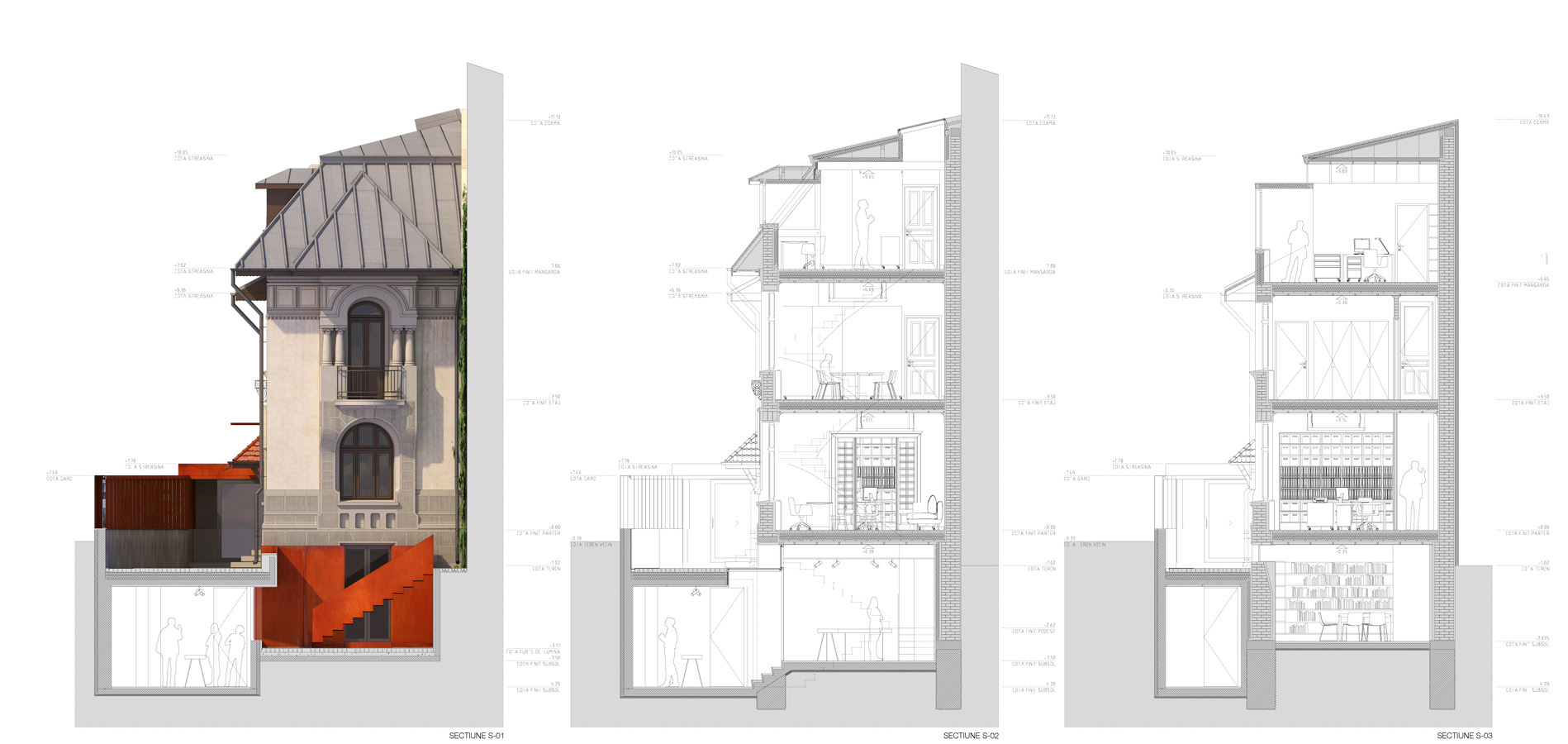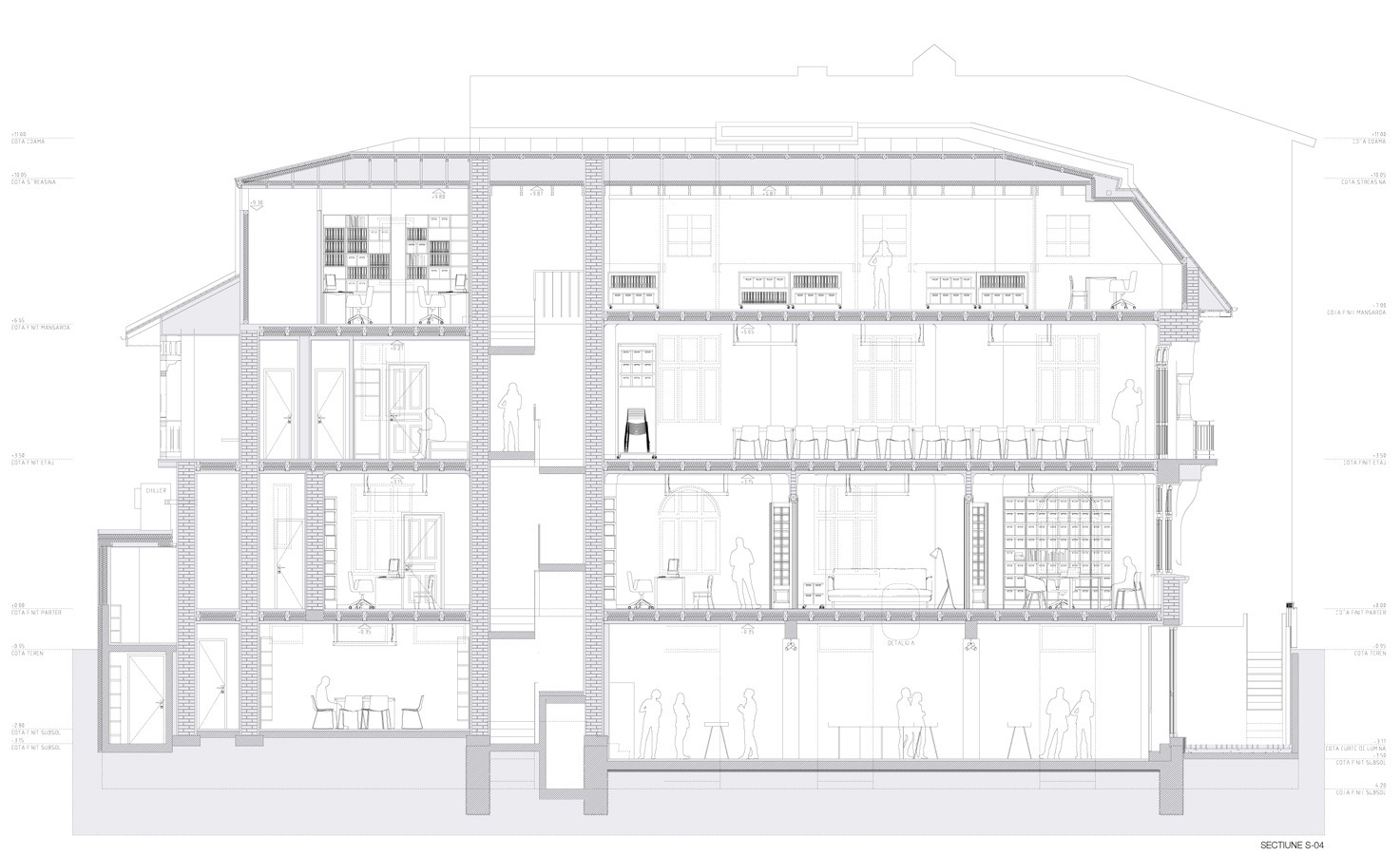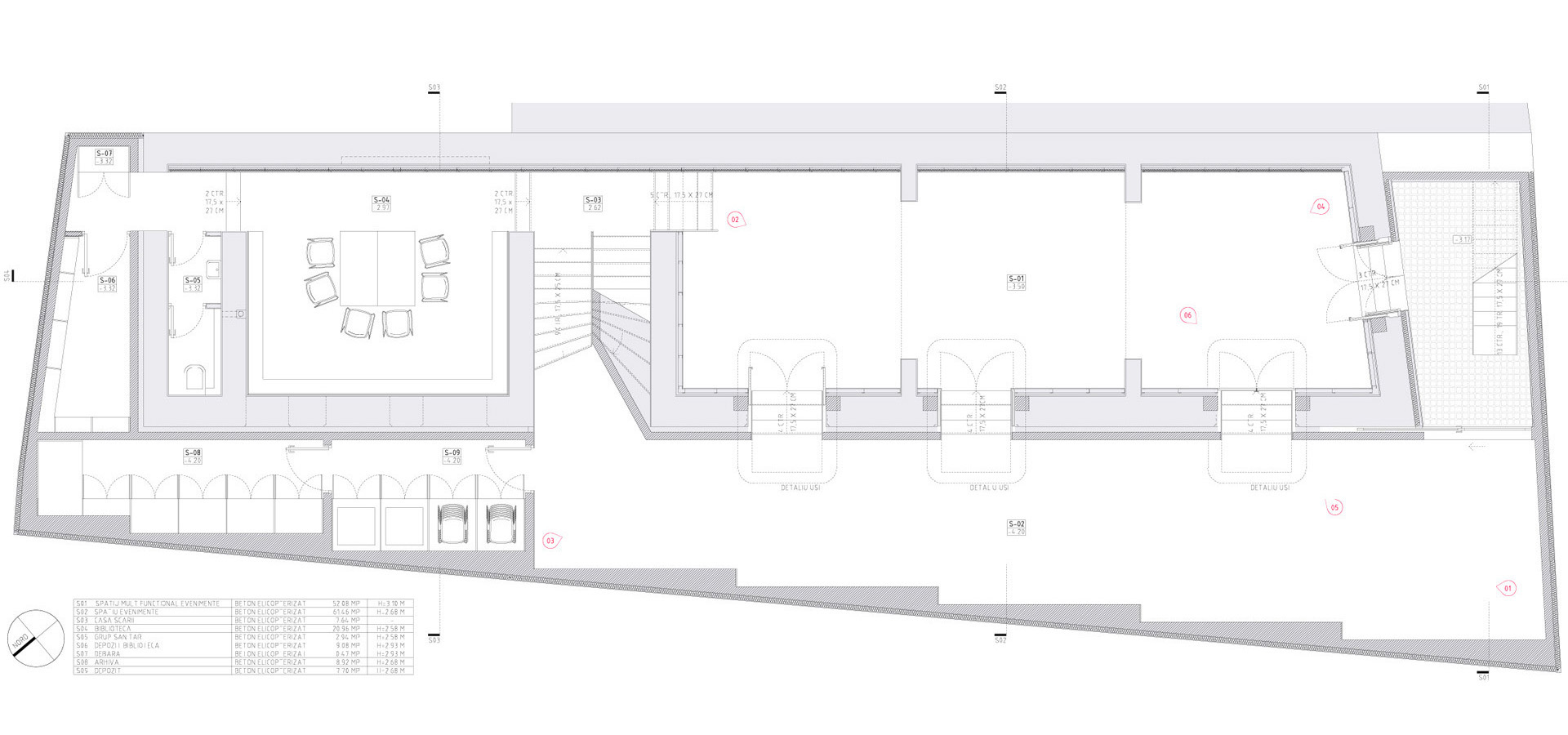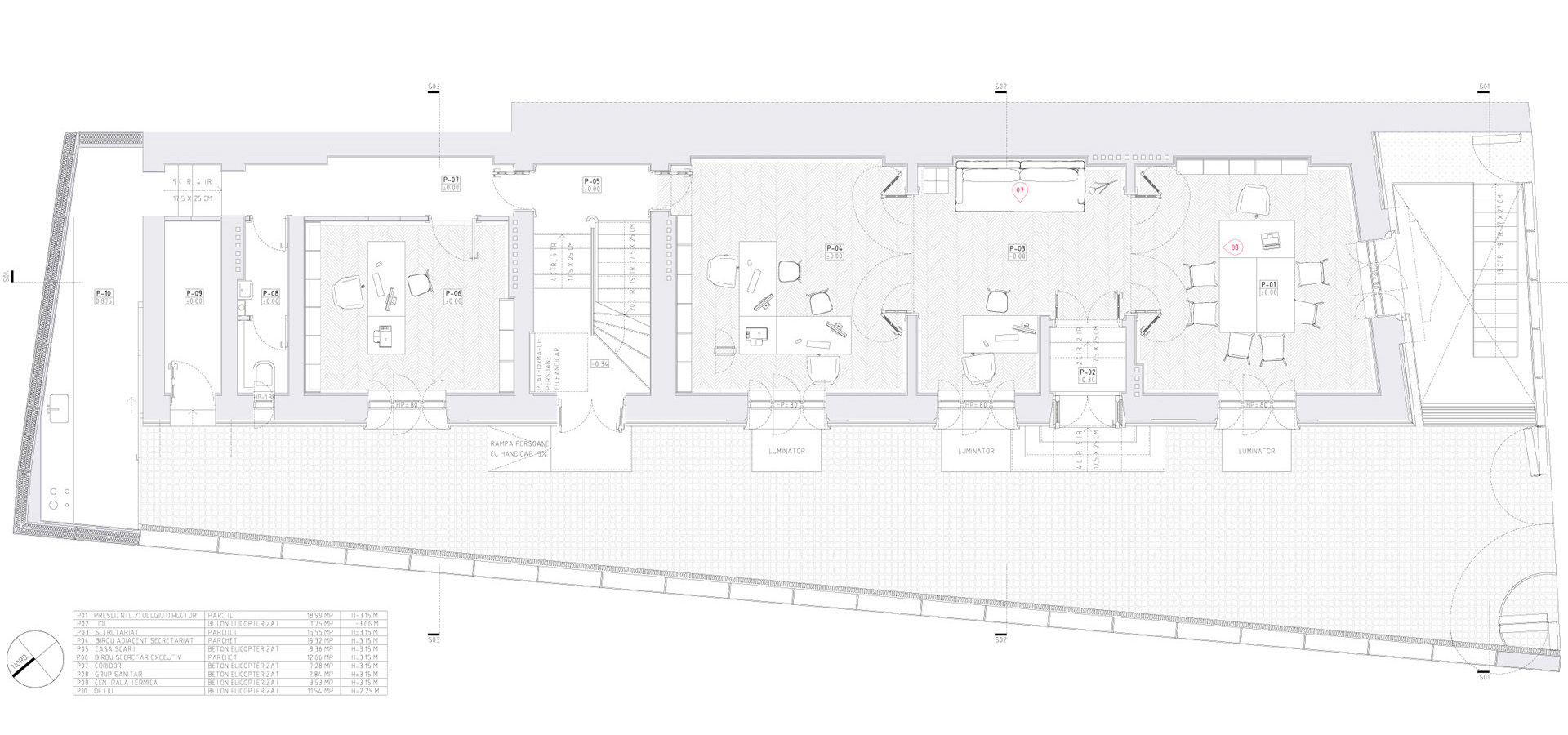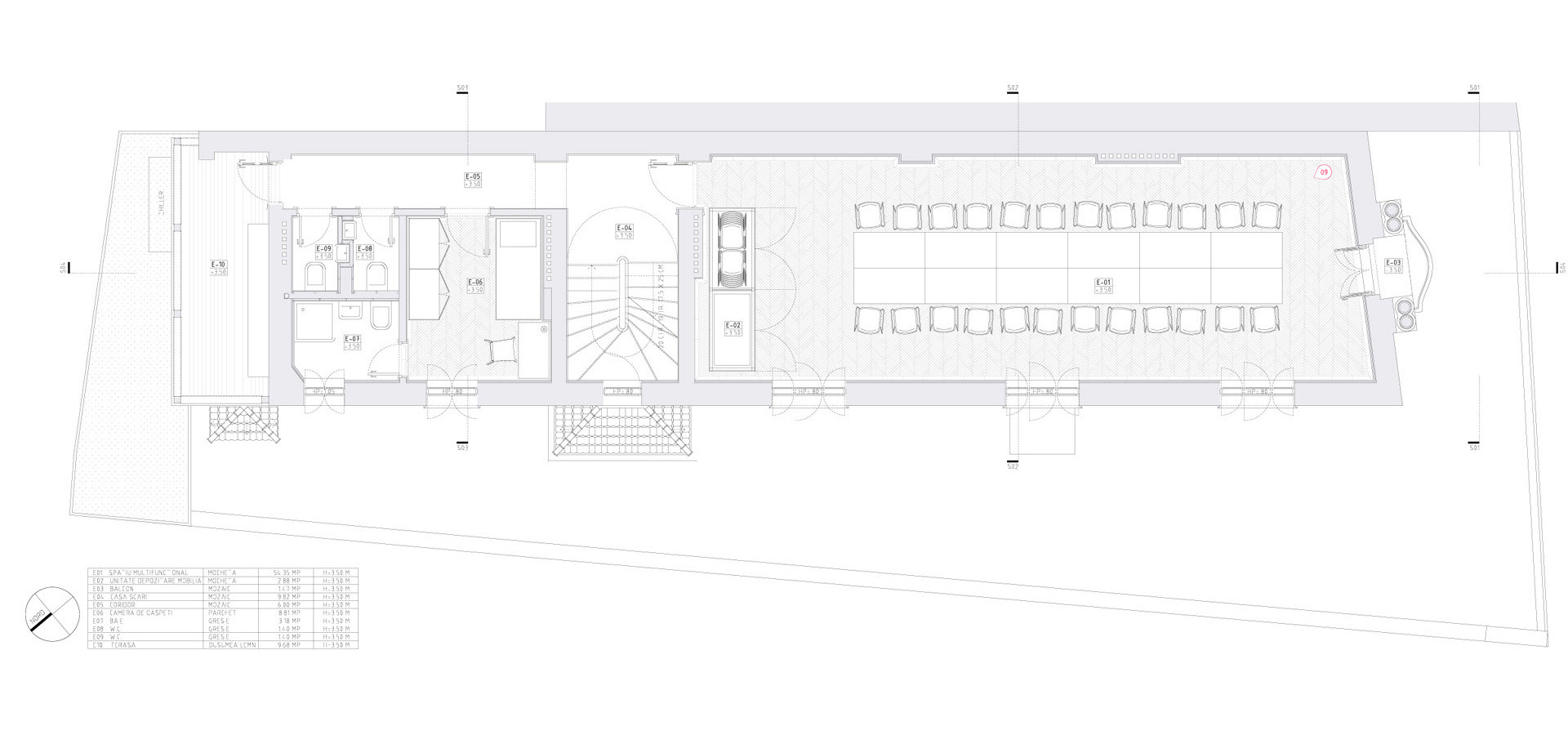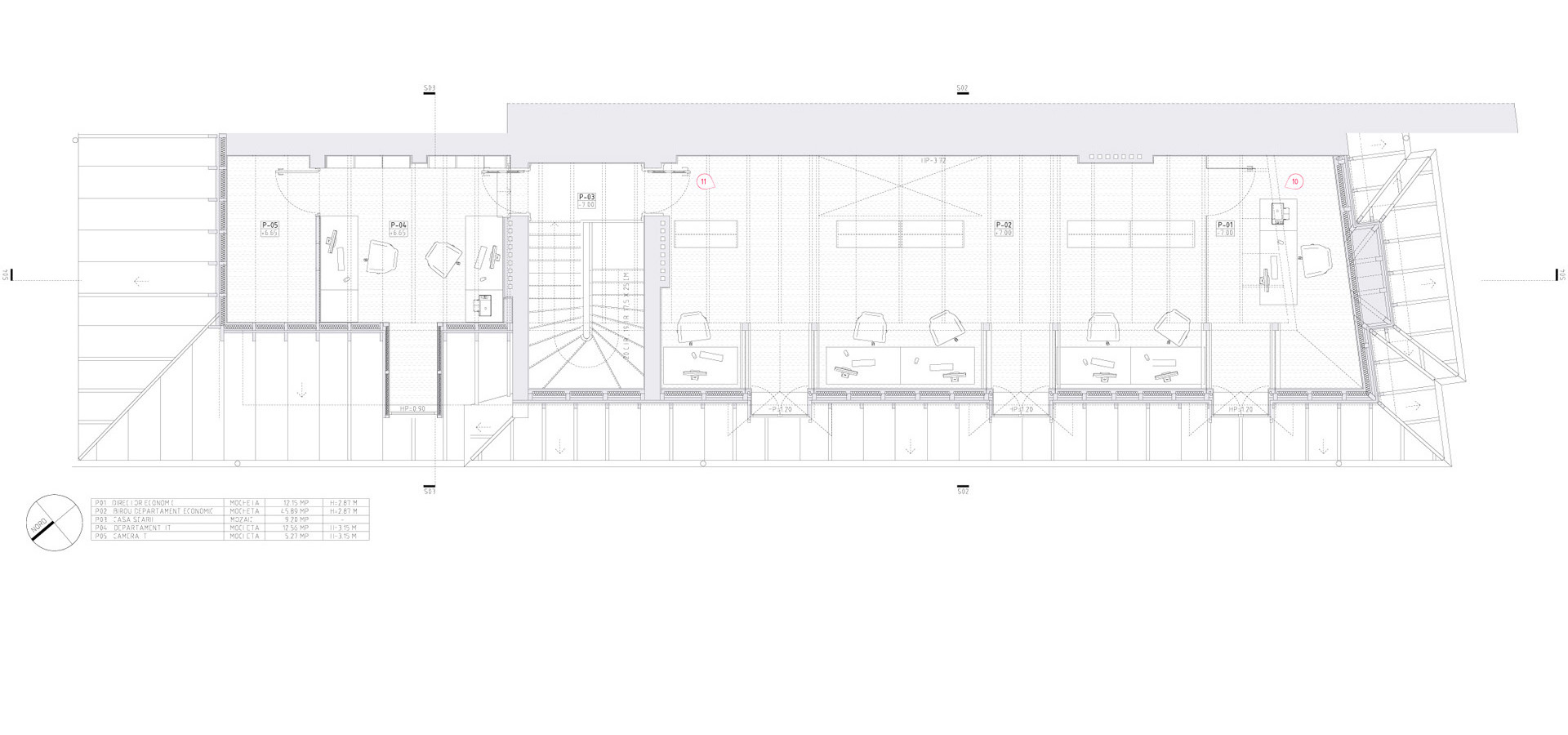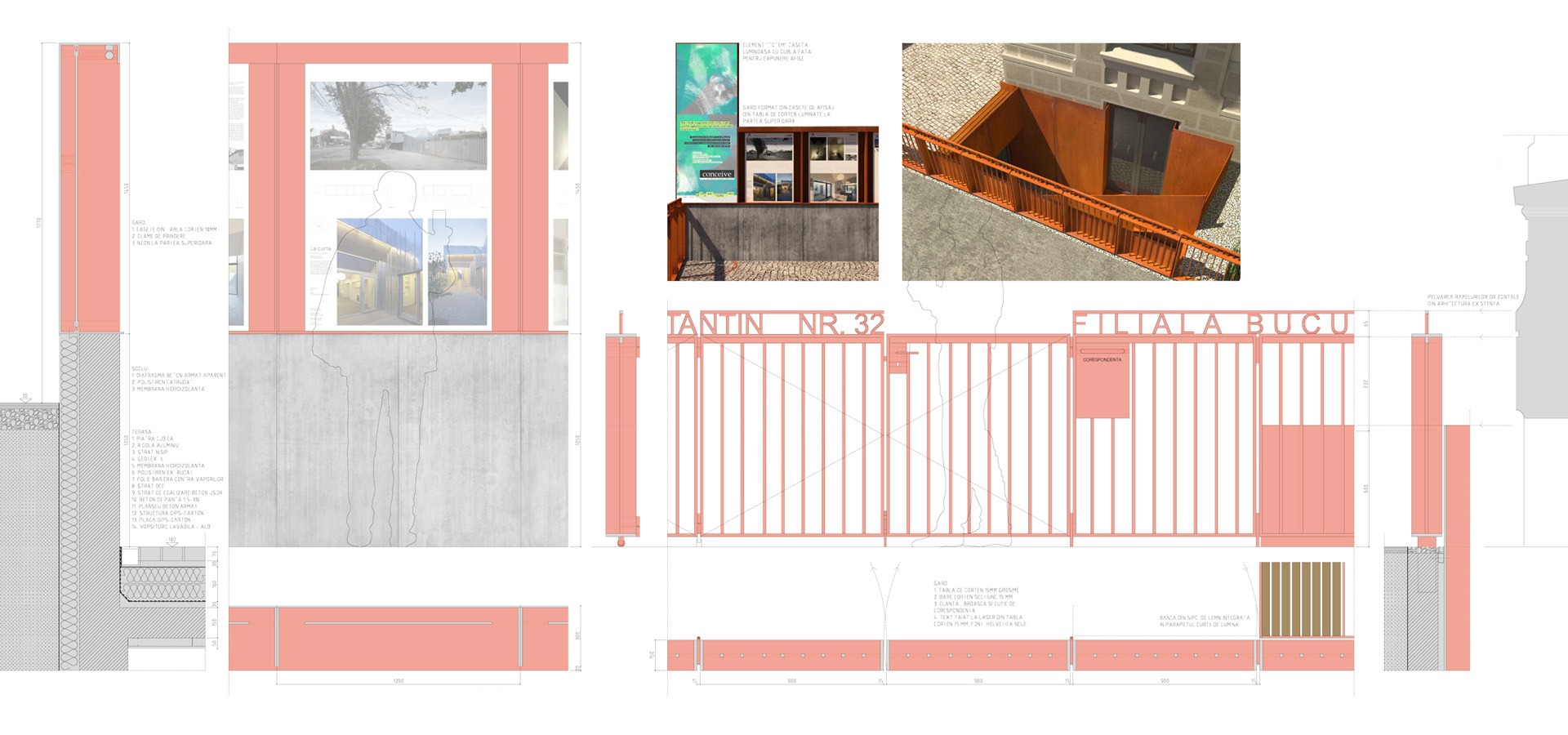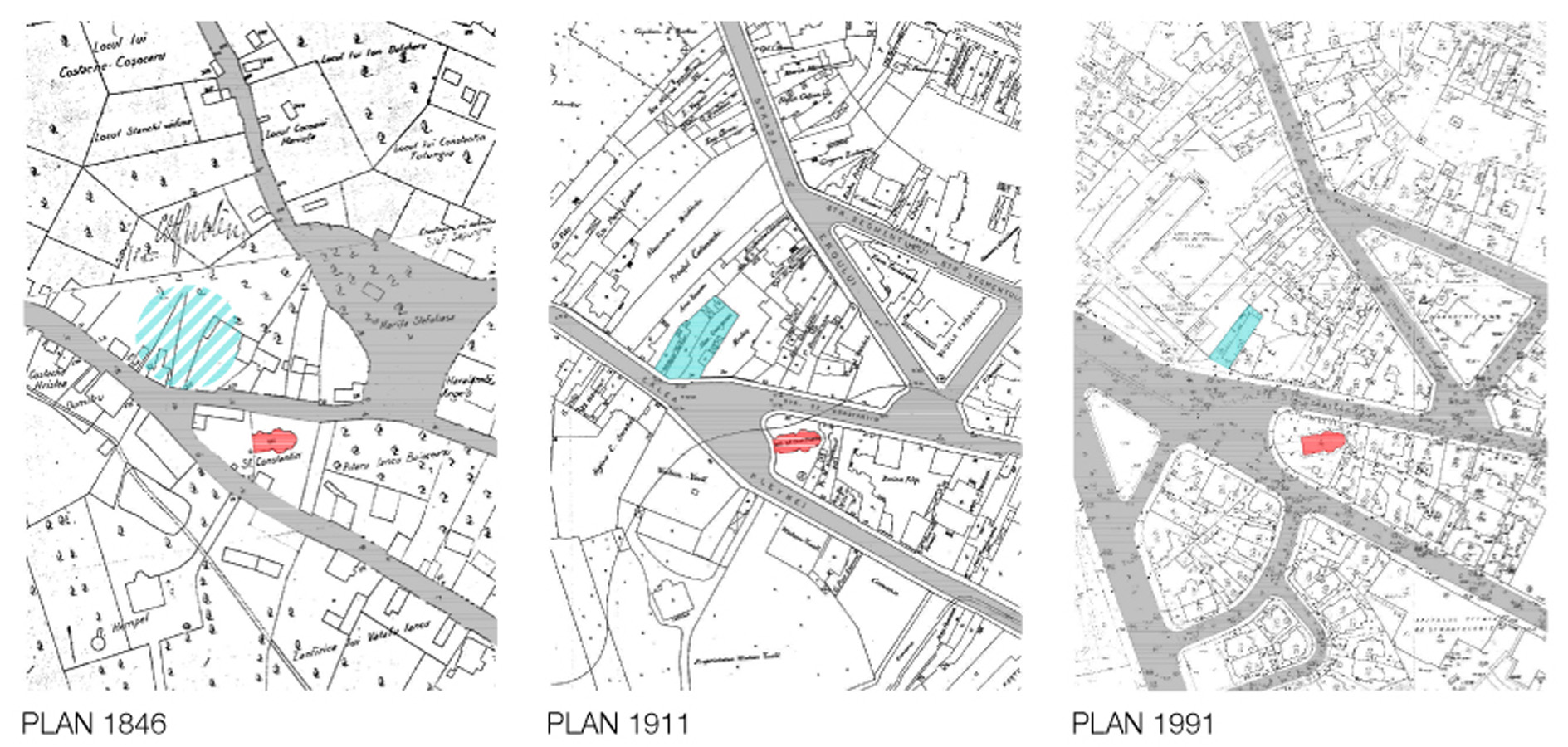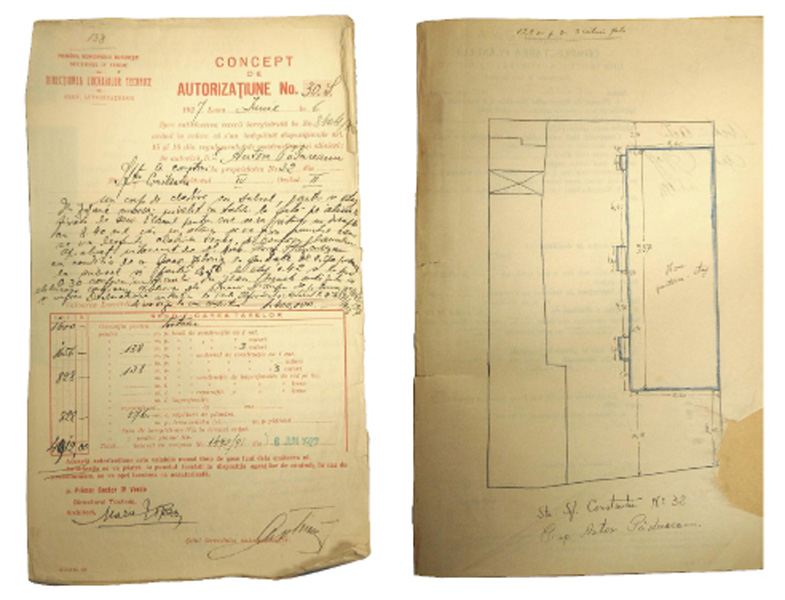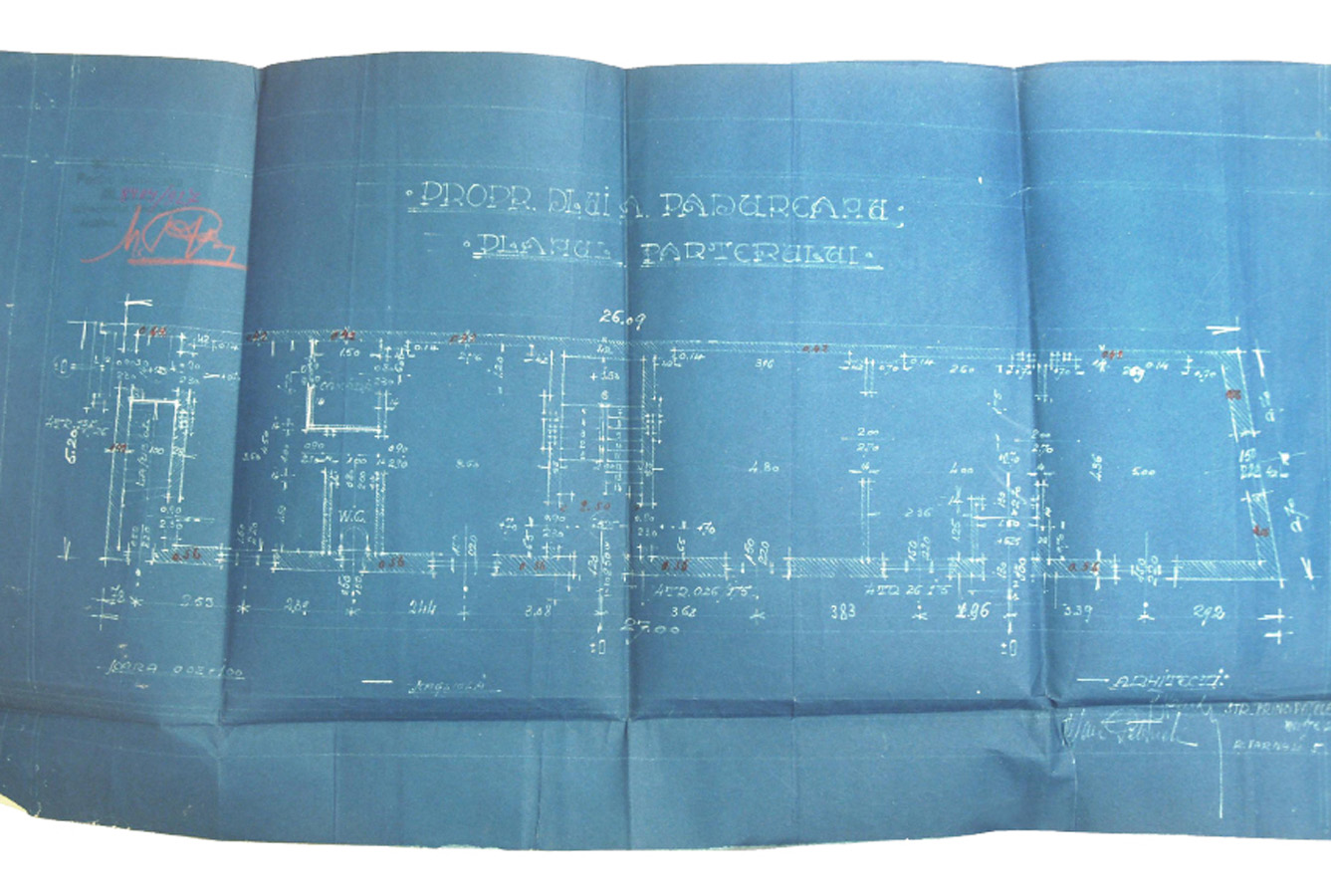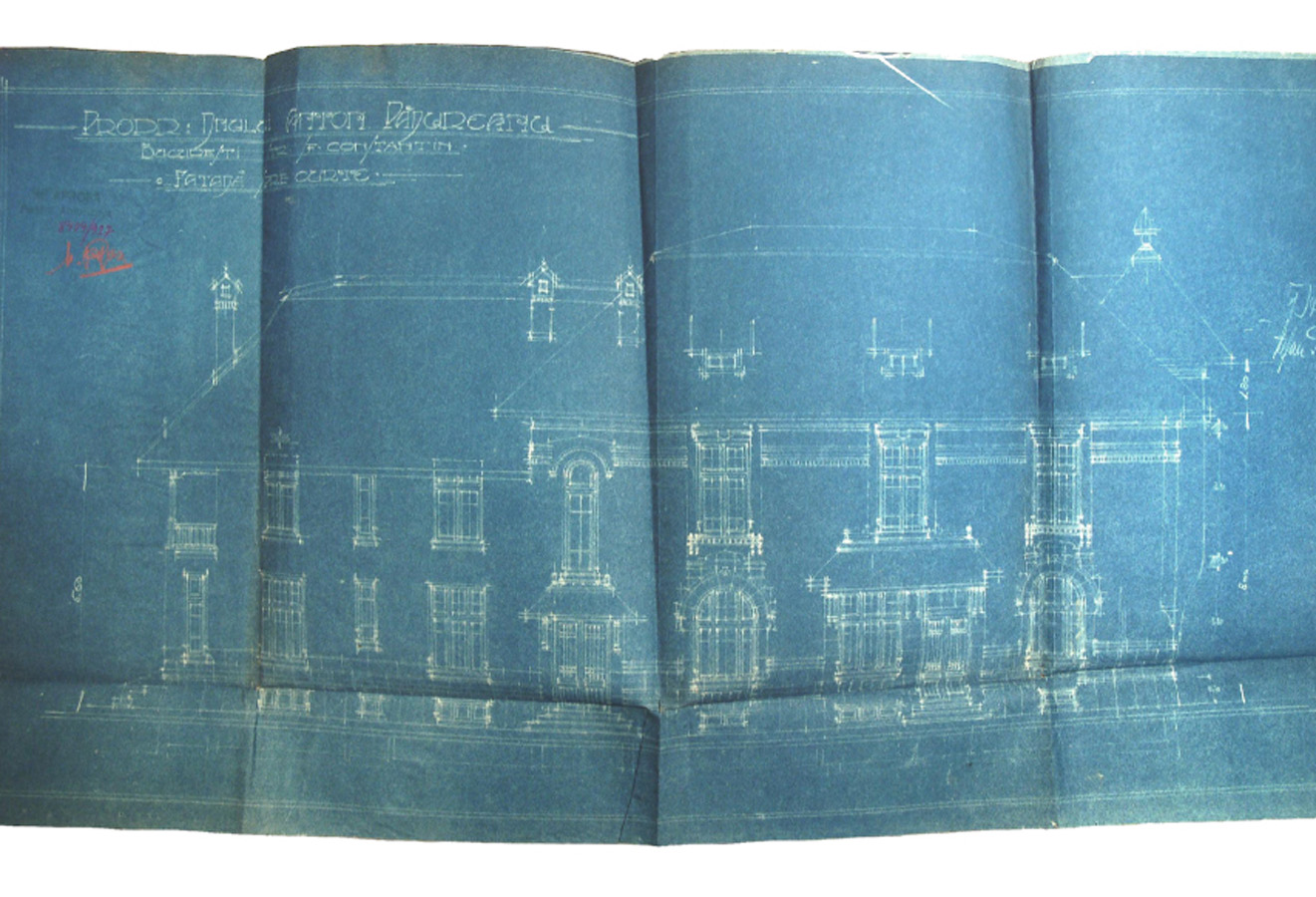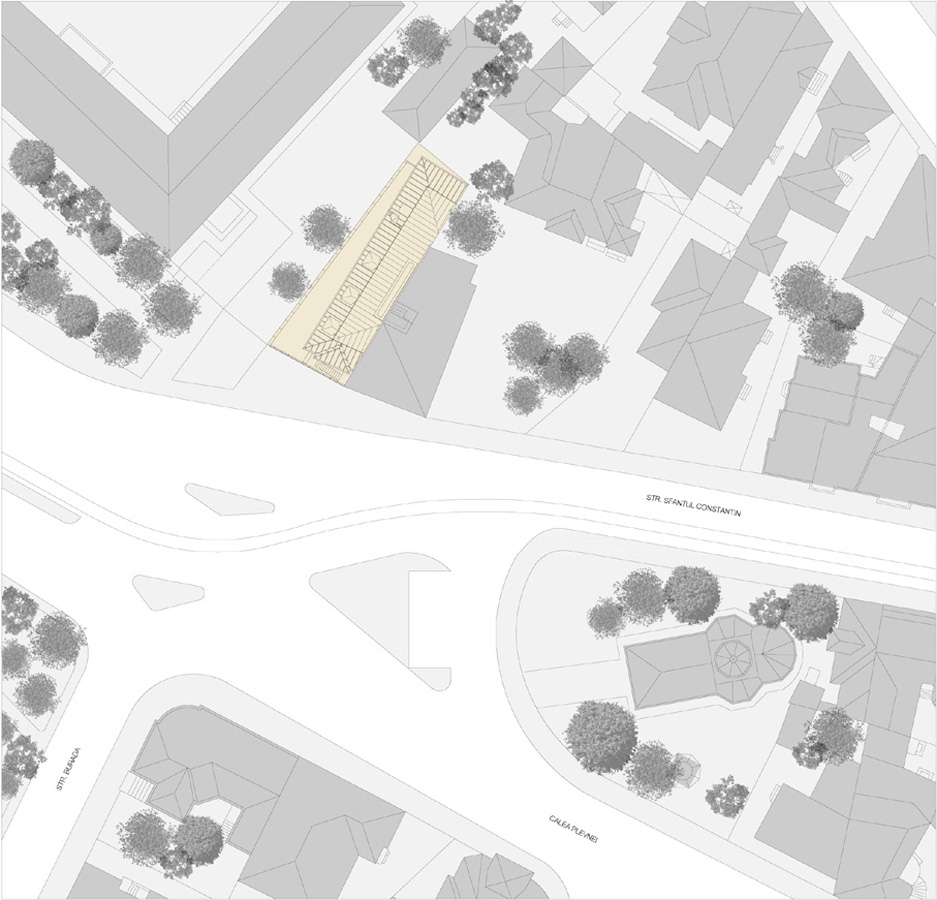
Restoration and Extension of The Bucharest Chamber of Architects Center
View project description2015Competition Restoration and Extension of The Bucharest Chamber of Architects Center
2014 / Competition / Restoration and Extension of The Bucharest Chamber of Architects Center
Location: Bucharest, Romania
Project Status: Competition
Architecture: E+EA – Mihai Ene, Adela Ene
Restauration and conservation expert consutant: Petru Mortu
Structure: Profesional Construct Proiectare – Paul Ioan
Client: Bucharest Chamber of Architects
Surface: –
Period: 2014
Renders: E+EA
01. Evolution of the studied area
The analyzed area was formed in the second half of the eighteenth century around the church of Sfântul Sf. Împăraţi Constantin şi Elena. Positioned at some distance from the center of the city of Bucharest, the area had a slow development throughout the nineteenth century, accelerated only in its last decades. The plans drawn in the middle of the century capture an irregular street pattern dominated by Podul de Pământ, an important street of the medieval city that joins the center to one of its gates. Among the streets that have been formed in this period there are Cobalcescu, Ostaşilor, I. Slavici, Gh. Lazăr, and of course St. Constantine. Lots are of considerable size, most of the land being used for agricultural crops. Constructions, generally very modest, have small dimensions and are oriented towards the street.
In the last decades of the century, the rural character of the city begins to disappear. Building regulations become much more stricter, and the image of the western city finds supporters at all levels of society. The street routes are regularized, the allotment finds more firm limits, but remains tributary to its previously defined agricultural character. Architecture, for the most part, takes on formal language elements of inspired by French school academism, all of which are applied to the simple morphology of the wagon dwelling or to the central hall and perimeter rooms spatial scheme. The architectural vocabulary is diversified at the beginning of the 20th century by the emergence of neo-Romanian style, than later on, in the interwar period, the principles of modernism were used regularly by the architects of the time. Also during this period the allotment is densified as a consequence of the successive division of the former properties. Densification of the territory can be observed also by the increasing height of the new constructions in accordance with the new urban planning regulations. After 1945, the already structured area no longer undergoes major changes, the interventions so characteristic of the period bypassing this part of the city.
02. Evolution of the building
The first information related to the analysed building is provided by the plan of the Austrian major Rudolf Arthur Borroczyn realised between 1844-1846. On the analyzed plot there is a small, unbuilt plot that has access to St. Constantine Street.
The plan drafted in 1911 adds further insights into the existing built structure, mentioning their owners as well. The plot that has an address on St. Constantine Street no. 30 belongs to Alex. Georgesecu. The same name appears on two other properties located at several lots away from the studied building (St. Constantine Street 28 and Eroul Street 7). The studied building, with a double surface over the current one, had a main building and several annexes, the configuration being maintained until February 1927 when its direct heirs decide to divide the property. The building in question comes from Ecaterina Codreanu and Ana Pădureanu. In May of the same year, Anton Padureanu requested permission from the City Hall to build a basement, ground floor and floor building. He receives the agreement of the institution, but he has to give up some of the land to make a new street alignment. This intention by which the intersection of the of Plevna and St. Constantine streets was practically systematized was only partially accomplished, so that the building is now withdrawn from the 2.8 m alignment. The secluded position seems to be an accident on St. Constantine, but it is the only visible testimony of those systematization intentions.
03. Architectural analysis
The project was made by Florea Stănculescu, a personality of the Romanian interwar architecture. The stylistic architectural options of the architect, well-known in the epoch, determined the proposal of a volume in which the principles of the national current are well emphasized. The rectangular volume (approximately 23×5.5×7.8m) is covered by a strong sheet metal roof. The area in which the main house functions (street-side) are arranged has been differentiated by a higher height and decoration immediately placed under the cornice. Vocabulary elements characteristic to the national style highlight parts of the overall volume. The main façade is characterized by a bow window detached from its plan, while a wooden porch was designed to the north. To these elements, arched windows are added and canopies supported on wooden consoles placed at the entrances of the house.
Inside, the most important area of the house are the rooms facing St. Constantine Street. Here the ceilings are decorated with perimeter mouldings, but what gives a particular note to space is the realization of a visual continuity between the three rooms. The emphasis of this quality is possible through the opening of glass doors, carpentry elements with real aesthetic and technical qualities.
Access to the upper levels (floor and attic) is obtained by means of a concrete staircase finished with molded mosaic. One can reach the basement using a secondary staircase located to the northern end of the building.
04. Construction Authorization Project
Following the project plans, changes can be detected. Perhaps the client’s demands, financial difficulties, the lack of effective control of City Hall officials or, why not, the reworking of the submitted version have led to the application of solutions whereby the qualities of the project as a whole have been diminished. The most important changes are visible at the level of the main façade where the height of the belvedere has been lowered, its volume being covered in a unitary roof. By this decision the vertical emphasis, so characteristic of the neo-Romanian architecture, was abandoned. Transformations of the original project are also visible on the western façade where the access area has received a less elaborate solution, the size and manner of its treatment being excessively simplified. Less noticeable changes can also be found at roof level where other solutions have been adopted for the connection between the primary and secondary volumes.
05. Architect Florea Stănculescu
One of the representative names of the Romanian school of architecture, constant promoter of the national trend is undoubtedly Florea Stănculescu. He was born in Baileşti (Dolj) in 1887. He attended high school in Piatra Neamţ becoming a student of the Higher School of Architecture in 1908. Ion Mincu’s student “was, perhaps (…) the most faithful follower of his ideas and intentions”. His studies have mainly documented the issues of traditional architecture diversified in a multitude of theories, concepts and projects developed in rural and urban areas. Professor of the Faculty of Architecture, he has published several books dedicated to rural architecture, was director of the Arhitectura and Rural Constructions magazines, designed the systematization projects of numerous villages and towns (Ciulnita, Calarasi, Vaslui, Bacau, Apostolache, Boboc), projects for the Palace of Agriculture in Brăila, the horticultural schools from Băneasa, Turda, Dragomireştii din Vale, the agriculture from Valea Călugărească, Nucet, Ştefăneşti and, of course, from this enumeration could not miss the complex of the University of Agronomic Sciences in Bucharest) as well as numerous villa projects (C. Stătescu, E. Ene, C. Zamfirescu, I. Păunescu) and mansions (G. Garofild, I. Răducanu, Armand Calinescu).
06. Argument for the proposed solution
At first glance, the attitude regarding the possibilities of intervention on the existing building can outline various positions that balance between discrete solutions to the forceful. An careful architectural research, doubled by an archive study, can structure the boundaries of actions in clearer terms, so that building values are preserved and accentuated. One of the main qualities of the building is its belonging to the stylistic principles of the Neo-Romanian style, developed in its later forms. The signing of the project by Florea Stanculescu, an important personality of the interwar architecture and also a constant researcher and supporter of the national values, confirms the quality of the architecture in question. Although in comparison to the project submitted for obtaining the building permit one can detect modifications, visible especially in the southern face area, the general lines proposed by the architect retained their main characteristics. It is worth noting the elements of detail that give a particular character to the volume, referring to the bow widow of the southern façade, the north-facing wooden porch, the cornice and the profiled frames of the ground floor. The architectural qualities are not only associated to the exterior forms, but an important contribution is added by the main rooms of the ground floor where space continuity supported by spectacular technical solutions are elements that stand out of the monotony of common solutions.
The general idea underlying the proposal was that of making discrete interventions that would replace existing values. The increase of the surfaces was possible by extending the basement and through a minimal intervention on the level of the attic of the secondary body, a discrete solution almost invisible from the immediate vicinity (Calea Plevnei, Vasile Parvanu str. And St. Constantine St.). All elements that provide identity to the existing volume will be restored / preserved, with special attention being given to the consolidation solution.
